In the realm of culinary creation, where flavors blend and aromas enchant, lies a fundamental tool that bridges the gap between imagination and indulgence: the humble baking pan.
Beyond its mere metallic or ceramic structure, a baking pan serves as the canvas upon which delectable masterpieces are born. It’s not merely a vessel for batter or dough; it’s a conduit for transformation, turning raw ingredients into golden-brown perfection or moist, succulent delights.
From the crisp edges of a perfectly baked pie to the soft embrace of a fluffy cake, the baking pan is the unsung hero of the kitchen, silently aiding in the alchemy of turning ingredients into edible art.
Let’s embark on a journey to uncover the essence of what truly makes a baking pan an indispensable ally in the pursuit of gastronomic excellence.
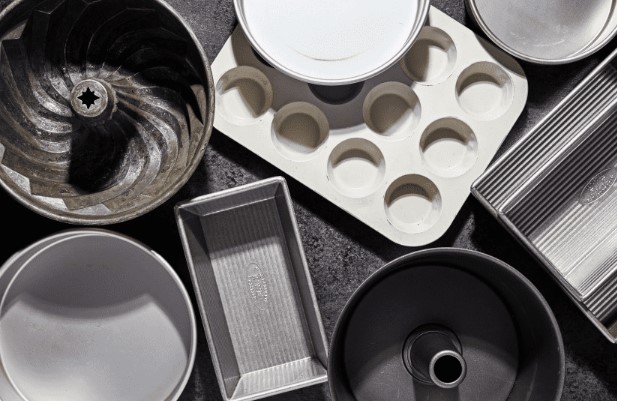
What Is A Baking Pan
A baking pan is a fundamental tool in the kitchen used for baking various dishes, from cakes and bread to cookies and casseroles.
Typically made of metal, such as aluminum or stainless steel, baking pans come in a variety of shapes and sizes to accommodate different recipes and serving needs. They feature raised edges, allowing for easy handling and preventing spills or drips in the oven.
Some pans are non-stick coated to facilitate the removal of baked goods without leaving residue behind, while others may be designed for specific purposes, like loaf pans for bread or muffin tins for cupcakes.
Baking pans are essential for ensuring even heat distribution during the baking process, resulting in perfectly cooked and golden-brown creations.
Whether you’re a seasoned baker or just starting out, having a reliable assortment of baking pans is essential for achieving delicious results in the kitchen.
Types of Baking Pans According to Their Material
Baking pans come in various materials, each offering different advantages for specific types of baking. The most common types of baking pans according to their material include:
Aluminum
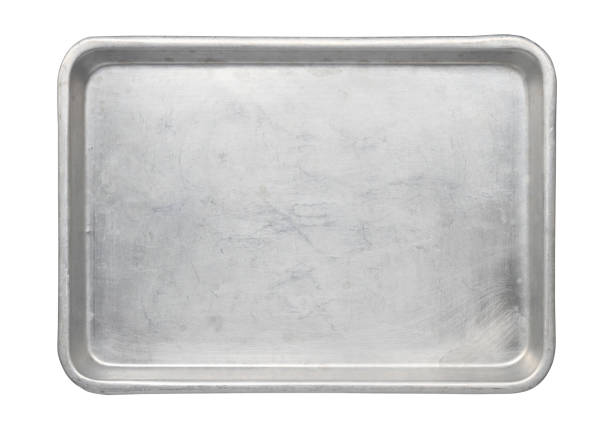
Aluminum baking pans are renowned for their lightweight design and excellent heat conductivity, ensuring even baking results.
Their durability and resistance to rust make them a staple in many kitchens, while the inclusion of non-stick coatings facilitates easy release of baked goods. Aluminum pans are versatile, suitable for various recipes ranging from cakes to casseroles.
With their affordability and efficiency, aluminum baking pans are a favorite choice among home bakers and professional chefs alike.
Stainless Steel
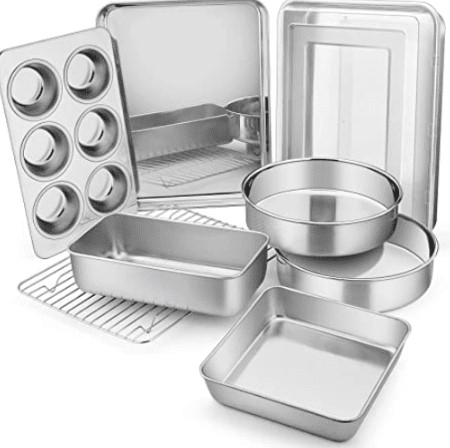
Stainless steel baking pans are prized for their durability, non-reactive properties, and resistance to corrosion. These pans feature a polished surface that promotes even heat distribution, resulting in consistent baking results.
While they may lack non-stick coatings, stainless steel pans are renowned for their longevity and easy maintenance. Their sturdy construction makes them ideal for baking a wide range of dishes, from savory casseroles to delicate pastries.
Whether used in home kitchens or professional settings, stainless steel baking pans are valued for their reliability and versatility.
Glass pans
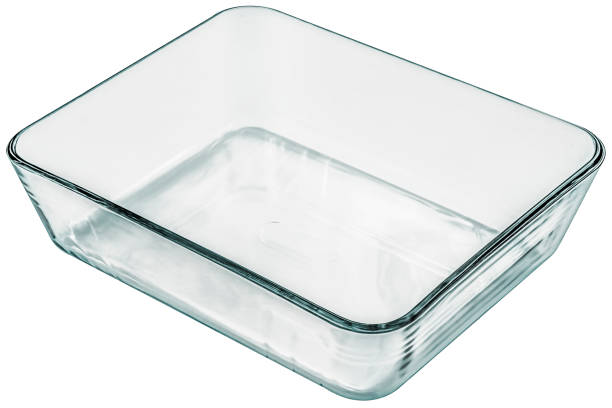
Glass baking pans are beloved for their ability to conduct heat slowly and evenly, ensuring thorough and uniform baking.
Their transparent nature allows for easy monitoring of the browning process, making them perfect for delicate recipes like custards or fruit crisps. Glass pans are non-reactive, so they’re great for acidic ingredients, such as tomatoes or citrus fruits.
They’re also versatile, transitioning seamlessly from oven to table, adding a touch of elegance to any presentation. Easy to clean and resistant to staining, glass baking pans are a favorite among home cooks for their practicality and aesthetic appeal.
Silicone pans
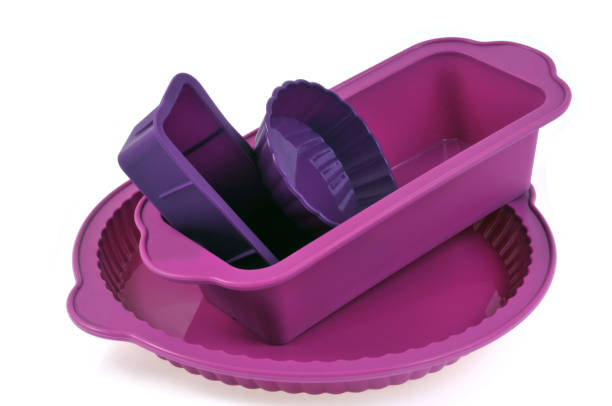
Silicone baking pans are prized for their flexibility, non-stick properties, and heat resistance. Their flexibility allows for easy removal of baked goods, making them ideal for intricate shapes and delicate treats like cupcakes and muffins.
These pans are also dishwasher-safe, making cleanup a breeze. Silicone’s heat resistance enables these pans to withstand a wide range of temperatures, from freezing to baking, providing versatility in the kitchen.
Lightweight and easy to store, silicone pans are favored by home bakers for their convenience and reliability.
More Baking Pans and Their Material
Certainly! Here are a few more types of baking pans and their materials:
Clay or Stone Baking Pans
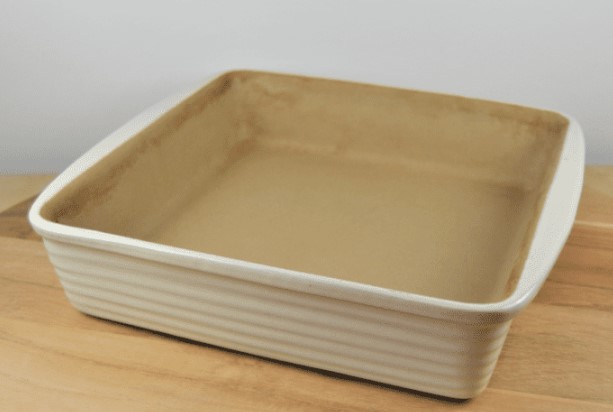
Clay or stone baking pans, often referred to as ceramic or stoneware pans, are prized for their ability to retain and distribute heat evenly, resulting in perfectly baked goods.
These pans are typically made from natural materials such as clay or stone, which lend a rustic charm to the baking process. Clay or stone pans provide excellent heat retention, ensuring that dishes stay warm for longer periods after coming out of the oven.
They are ideal for baking bread, pizzas, and savory casseroles, as well as desserts like fruit crisps and cobblers. Their natural properties enhance the flavor and texture of baked goods, making them a favorite among home bakers looking to achieve authentic and delicious results.
Silicone Baking Molds
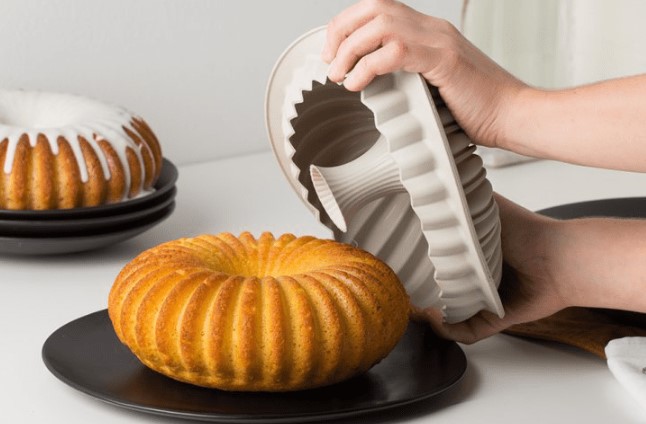
Silicone baking molds are versatile tools that offer flexibility, durability, and non-stick properties, making them ideal for various baking needs.
Made from food-grade silicone, these molds are heat-resistant and can withstand a wide range of temperatures, from freezing to baking. Their flexible nature allows for easy removal of baked goods without the need for greasing or flouring, resulting in effortless release and minimal cleanup.
Silicone baking molds come in a myriad of shapes and sizes, including muffin cups, cake pans, loaf pans, and even novelty shapes like hearts or stars. They are dishwasher-safe, making them convenient for everyday use, and their lightweight construction ensures easy storage.
Whether you’re baking muffins, cupcakes, brownies, or mini cheesecakes, silicone baking molds are indispensable tools for achieving professional-quality results in the kitchen.
Carbon Steel Pans

Carbon steel pans are renowned for their durability, versatility, and excellent heat conduction properties, making them a favorite among professional chefs and home cooks alike.
These pans are constructed from a combination of iron and carbon, which results in a material that is both lightweight and sturdy. Carbon steel pans heat up quickly and evenly, ensuring consistent cooking results across the entire surface.
They are naturally non-stick when seasoned properly, providing effortless food release and easy cleaning. Carbon steel pans are suitable for a wide range of cooking techniques, including frying, sautéing, searing, and even baking.
They develop a natural patina over time, enhancing their non-stick properties and adding depth of flavor to dishes.
Whether used on the stovetop, in the oven, or over an open flame, carbon steel pans are versatile tools that can handle anything from delicate omelets to hearty steaks with ease.
Types of Pans According to Use
Pans come in various types according to their specific uses in the kitchen. Here are some common types:
Sheet Baking Pan
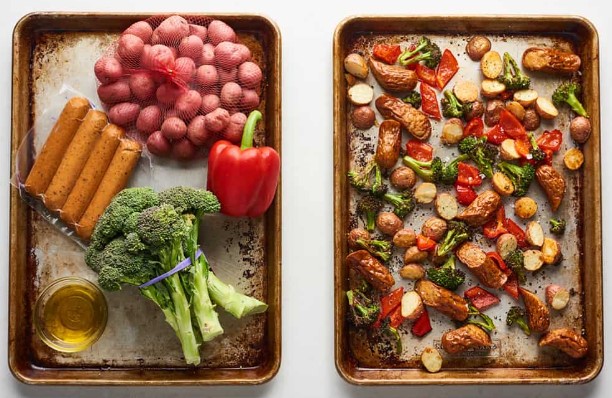
A sheet baking pan, also known simply as a baking sheet or sheet pan, is a versatile tool in the kitchen used for a wide range of baking tasks. It features a flat, rectangular surface with raised edges on all four sides, which helps contain liquids and prevents spillage in the oven.
Sheet baking pans are commonly made from aluminum, stainless steel, or carbon steel, offering durability and even heat distribution. They are perfect for baking cookies, pastries, and other baked goods, as well as roasting vegetables and meats.
Sheet pans come in various sizes, allowing for flexibility in accommodating different recipes and batch sizes. Their straightforward design and functionality make them essential in any kitchen, whether for home baking or professional cooking.
Pie Pan
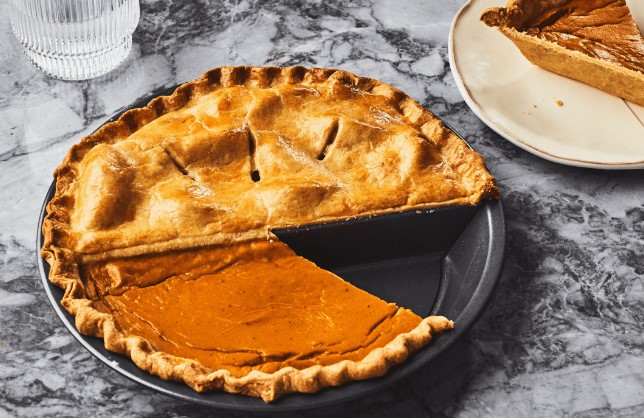
A pie pan, also known as a pie dish or pie plate, is a round, shallow dish with sloped sides, specifically designed for baking pies, tarts, quiches, and other pastry-based dishes.
Pie pans are typically made from materials such as glass, ceramic, aluminum, or steel, each offering different advantages. Glass and ceramic pie pans provide even heat distribution and are oven-safe, allowing for a crispy crust and perfectly baked filling.
Aluminum and steel pie pans are lightweight and often come with non-stick coatings, facilitating easy removal of pies and quick cleanup. Pie pans may have fluted edges, adding decorative detail to the finished pie crust.
Their versatility and functionality make pie pans essential for any baker, whether creating classic fruit pies or savory quiches.
Loaf Pan
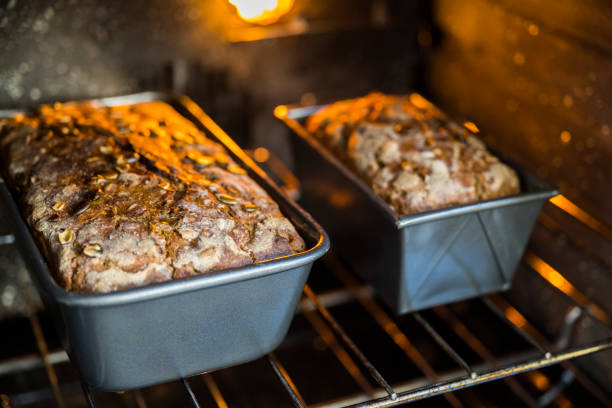
A loaf pan is a rectangular-shaped baking vessel specifically designed for baking bread, cakes, and meatloaf in a loaf form.
Typically made from materials such as aluminum, stainless steel, or non-stick coated steel, loaf pans come in various sizes to accommodate different recipes and serving needs. They feature straight, tall sides and a flat bottom, providing structure and support for the baking process.
Loaf pans are versatile tools in the kitchen, allowing for the creation of various bread types, from traditional sandwich loaves to artisanal bread with decorative scoring. They are also suitable for baking pound cakes, banana bread, and other sweet or savory loaf-based recipes.
Loaf pans ensure even baking and easy release of baked goods, making them indispensable for home bakers and professionals alike.
Cake Pans
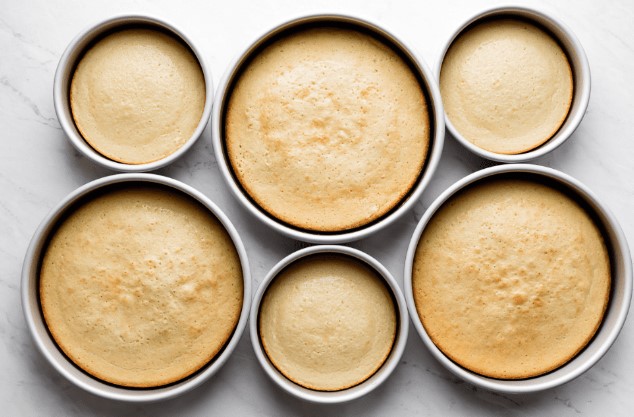
Cake pans are essential tools for baking cakes of various shapes and sizes. These pans come in a variety of styles, including round, square, rectangular, and novelty shapes like hearts or stars, allowing for creativity in cake design.
Cake pans are typically made from materials such as aluminum, stainless steel, or non-stick coated steel, each offering different benefits.
Aluminum and stainless steel pans provide even heat distribution, ensuring uniform baking and golden crusts, while non-stick coatings facilitate easy release of cakes and quick cleanup.
Some cake pans come with removable bottoms or springform designs, making it effortless to remove delicate cakes without damaging them. Cake pans may also feature straight or fluted edges, adding decorative detail to the finished cake.
Whether baking birthday cakes, layer cakes, or specialty desserts, cake pans are indispensable for achieving professional-quality results in the kitchen.
Factors to Consider When Choosing Baking Pans
When selecting baking pans, several factors should be taken into consideration:
Material considerations
- The material of the baking pan affects its performance and durability. Aluminum, stainless steel, silicone, glass, and ceramic are common materials used for baking pans, each offering different characteristics such as heat conductivity, durability, and non-stick properties.
Size and shape compatibility with recipes
- Ensure that the size and shape of the baking pan are suitable for the recipe you intend to bake. Different recipes may require specific pan sizes or shapes to achieve optimal results.
Temperature resistance and heat conductivity
- Consider the temperature resistance of the baking pan and its ability to conduct heat evenly. Some materials, like aluminum and stainless steel, offer excellent heat conductivity, while others, like glass and ceramic, may take longer to heat up but retain heat well once heated.
Ease of cleaning and maintenance
- Choose baking pans that are easy to clean and maintain. Non-stick coatings or materials like silicone often make cleaning a breeze, while some pans may require special care or hand washing to preserve their integrity.
Care and Maintenance of Baking Pans
Proper care and maintenance of baking pans are essential to ensure their longevity and continued performance. Here are some tips:
Cleaning
- After each use, wash baking pans with warm, soapy water and a non-abrasive sponge or cloth. Avoid using harsh cleaners or abrasive materials that can scratch the surface of the pan. For stubborn residue, soak the pan in warm, soapy water before cleaning.
Avoiding Abrasive Tools
- Refrain from using metal utensils or abrasive scrubbers that can damage the surface of the pan, particularly if it has a non-stick coating. Instead, opt for silicone, wooden, or plastic utensils to prevent scratching.
Seasoning
- For pans made of materials like cast iron or carbon steel, seasoning is necessary to create a natural non-stick surface and prevent rusting. To season a pan, coat it with a thin layer of oil and bake it in the oven at a high temperature for an hour. Repeat this process periodically to maintain the seasoning.
Storage
- Store baking pans in a dry area to prevent rusting and corrosion. If stacking pans, place a layer of parchment paper or cloth between them to prevent scratching. Avoid storing pans with food residue or moisture, as this can lead to mold or mildew growth.
Avoiding Thermal Shock
- Do not subject baking pans to extreme temperature changes, as this can cause warping or damage to the pan. Allow pans to cool gradually before immersing them in water or transferring them from the oven to a cold surface.
Inspecting for Damage
- Periodically inspect baking pans for signs of wear, such as warping, scratches, or corrosion. Replace pans that are no longer in good condition to ensure optimal baking results and food safety
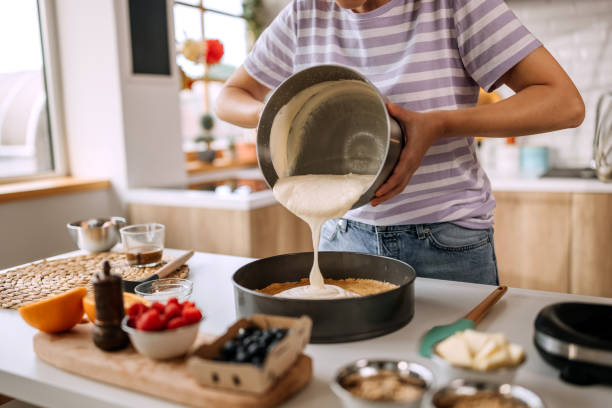
Frequently Asked Questions (FAQs) – What Is A Baking Pan
Q: What is a baking pan, and why is it essential for baking?
A: A baking pan is a versatile kitchen tool used for baking a variety of dishes, from cakes and cookies to roasts and casseroles. Its sturdy construction and non-stick surfaces ensure even heat distribution, resulting in perfectly baked goods every time.
Q: How do I choose the right baking pan for my needs?
A: When selecting a baking pan, consider the type of dish you’ll be making and the size of your oven. Opt for materials like aluminum or stainless steel for durability and even heat distribution. Additionally, choose a pan with the appropriate depth and dimensions to accommodate your recipe.
Q: Can I use a baking pan for purposes other than baking?
A: Absolutely! Baking pans are incredibly versatile and can be used for roasting vegetables, cooking meats, and even making casseroles. Their sturdy construction and non-stick surfaces make them ideal for a wide range of cooking tasks beyond just baking.
Q: How do I properly care for my baking pan to ensure its longevity?
A: To prolong the life of your baking pan, always hand wash it with mild detergent and warm water after each use. Avoid using abrasive cleaners or utensils that could scratch the surface. Additionally, make sure to thoroughly dry the pan before storing it to prevent rust or corrosion.
Q: Can I use baking pans in different shapes and sizes interchangeably?
A: While you can often use baking pans of different shapes and sizes interchangeably, it’s essential to adjust the baking time and temperature accordingly. Deeper pans may require longer cooking times, while smaller pans may result in quicker baking. Always refer to your recipe for specific guidance.
Q: Are there any eco-friendly options for baking pans?
A: Yes, there are several eco-friendly options available, such as silicone baking pans or those made from recycled materials. These options not only reduce waste but also offer excellent non-stick properties and durability, making them a sustainable choice for baking enthusiasts.
Q: Can I use baking pans for freezing and storing food?
A: Absolutely! Many baking pans are freezer-safe and can be used for storing leftovers or preparing meals in advance. Make sure to use airtight containers or wraps to prevent freezer burn and maintain the quality of your food.
Q: How can I prevent my baked goods from sticking to the pan?
A: To prevent sticking, always grease your baking pan thoroughly with butter, oil, or non-stick cooking spray before adding your batter or dough. Additionally, consider using parchment paper or silicone baking mats for added insurance against sticking.
Q: Are there any creative uses for baking pans beyond traditional baking?
A: Absolutely! Baking pans can be repurposed for various DIY projects, such as creating homemade candles, organizing small items like jewelry or office supplies, or even crafting decorative molds for soap or bath bombs. Let your imagination run wild!
Q: Can baking pans affect the outcome of my recipes?
A: Indeed, the type of baking pan you use can significantly impact the outcome of your recipes. Different materials and sizes conduct heat differently, affecting the texture and baking time of your dishes. Experimenting with various pans can lead to exciting culinary discoveries!
Conclusion
In conclusion, the baking pan serves as a fundamental tool in the world of baking, facilitating the creation of a wide array of delectable treats. From cookies and cakes to savory dishes, its versatility knows no bounds.
Understanding its various types, materials, and sizes empowers bakers to make informed decisions, ensuring optimal results with every culinary endeavor.
As a staple in kitchens worldwide, the baking pan embodies both functionality and creativity, inviting individuals to explore the endless possibilities of baking with confidence and enthusiasm.
Other Articles You May Also Like:
- What Is A Tart Pan (3 Surprising Facts)
- What Is A Broiler Pan (4 Secret Things)
- What Can You Use Instead Of A Bundt Pan (8 Surprising Substitutes)
- What Is A Tilt Skillet (4 Cool Facts To Know)
- How To Bake With Silicone Pans (7 Mind-Blowing Steps)
- Can You Bake In A Glass Pan (3 Amazing Things To Know)